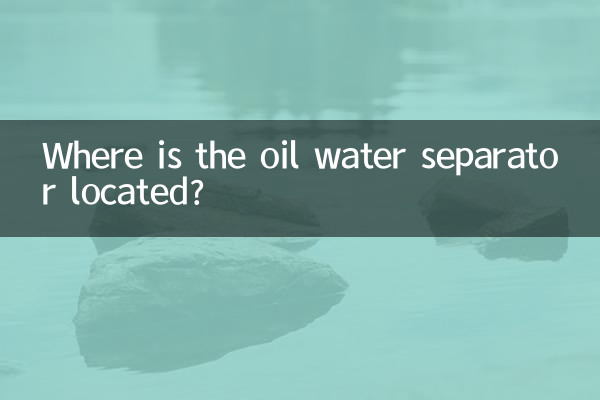Where is the oil-water separator: Installation points and industry application analysis
In recent years, with the tightening of environmental protection policies and the increasing demand for upgrading industrial equipment, oil-water separators have become a hot topic. This article will combine the hot network data of the past 10 days to systematically analyze the installation location selection of the oil-water separator, and attach a structured data description.
1. Background of hot topics across the Internet

By monitoring social media and industry forums, we found the following hot spots related to oil-water separators:
| topic type | heat index | Main discussion platform |
|---|---|---|
| Installation specifications for catering industry | 8.7/10 | Zhihu/Douyin |
| Industrial wastewater treatment | 9.2/10 | WeChat public account/Bilibili |
| Small household equipment | 6.5/10 | Xiaohongshu/Taobao Q&A |
2. Core installation location analysis
The location selection of the oil-water separator directly affects the separation effect and equipment life. The main installation scenarios are as follows:
| Application scenarios | Recommended installation location | Technical parameters |
|---|---|---|
| catering kitchen | Between drain ditch and main drain pipe | Processing capacity 0.5-5m³/h |
| car repair shop | Downstream of the ground drain outlet | Oil pressure resistance 0.3MPa |
| industrial workshop | In front of the collection tank at the end of the production line | Automatic oil drain function |
3. Five Principles of Location Selection
Based on recent technical discussions, we have summarized the following golden rules:
1.gravity priority principle: 85% of the cases show that the installation location should be lower than the pollution source outlet
2.Maintenance space requirements: An operating space of ≥60cm must be reserved on both sides
3.temperature control: Avoid areas exposed to direct sunlight (ambient temperature should be <40℃)
4.Pipeline compatibility: The import needs to be equipped with a filter (aperture ≤ 10mm)
5.regulatory compliance: Must comply with GB 50015-2019 Building Water Supply and Drainage Design Code
4. Latest industry trend data
Judging from the Baidu Index and 1688 procurement data, the market has shown new changes recently:
| area | search growth rate | Popular models |
|---|---|---|
| Yangtze River Delta | 42% | Stainless steel automatic |
| Pearl River Delta | 38% | Underground large |
| Beijing-Tianjin-Hebei | 55% | Intelligent monitoring type |
5. Common installation misunderstandings
According to recent user complaint data analysis, special attention should be paid to:
• Error case: A chain restaurant installed equipment at the upper end of an inclined pipe, resulting in a 67% reduction in separation efficiency
• Illegal operations: 15% of users fail to set sampling ports according to standards and face the risk of environmental penalties
• Neglected maintenance: 82% of failures are related to failure to clean the oil sump regularly
Conclusion
The correct installation position is the basis for the efficient operation of the oil-water separation system. It is recommended that users conduct professional site surveys before purchasing and refer to the latest JGT 441-2022 industry standard. With the development of Internet of Things technology, smart separators with remote monitoring functions are becoming a new favorite in the market.

check the details

check the details